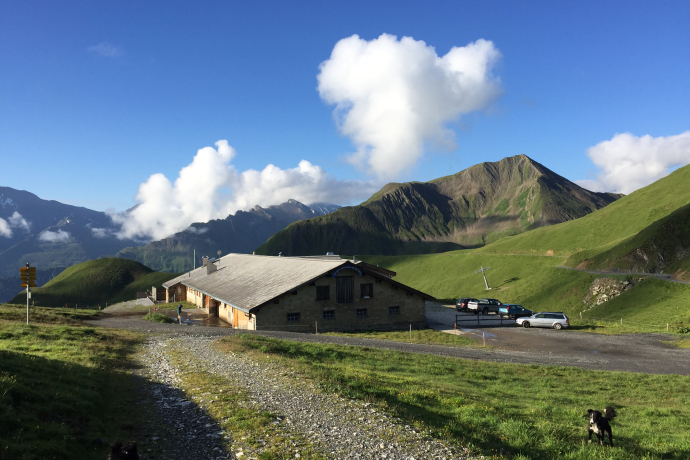The German hut on Swiss soil, hosted by Austria
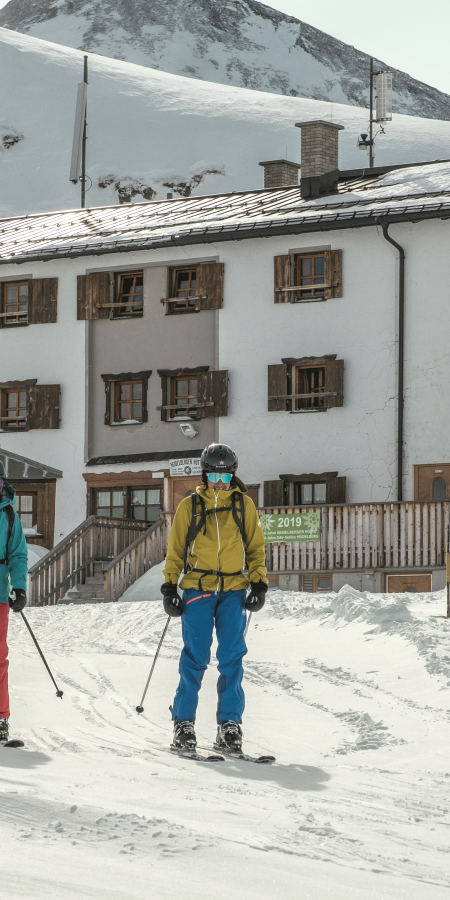
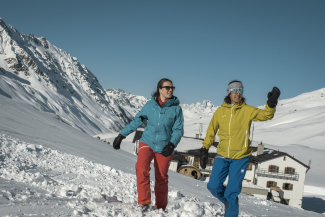
2500 years of alpine history in the Fimba Valley
The Heidelberg Hut stands on land belonging to the municipality of Valsot. When the hut was built, the municipality was still called Ramosch, or Remüs, as it says in the building contract. Right next to the Heidelberger Hütte are the remains of Alp Fenga, one of the oldest alps in Switzerland, which was used around 2500 years ago. Before the discovery in 2009, it was assumed that alpine farming did not begin until 500 AD. In their search for pastureland, the people of Lower Engadin advanced northwards into the Fimba Valley and Paznaun. This is also the reason why the Swiss-Austrian state border still runs 4 km below the Heidelberger Hut across the Fimba Valley. Even though relations between the Lower Engadine and Paznaun have flattened out in recent centuries, the connection between Sent and Ischgl still exists today: the Fimberalp is grazed by cattle from Sent and Ischgl in summer. In total, around 1500 cows and cattle graze in the 20 km long Fimba valley in summer.
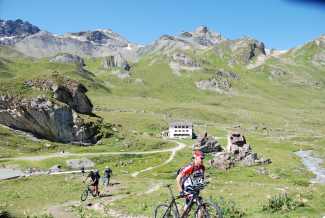
The only DAV hut on Swiss soil
Since its foundation in 1869, the German Alpine Association (DAV) has been committed to exploring the Alps and making them accessible through paths and refuges. Since the German and Austrian Alpine Associations were united until 1939, there are 183 DAV huts in Austria today. Only one DAV hut is in Switzerland: the Heidelberg Hut was built by the DAV Heidelberg Section, 500 km away, following a proposal by the Prague Section. The hut was ceremoniously opened on 19 August 1889. Stupidly, due to a self-inflicted mishap, the mattresses and blankets were not delivered on time, although they had been sent by express train 10 days earlier. Nevertheless, 40 people slept on the floor, bedded on moss and wood shavings.

Difficult start
During the first 10 years of operation, the hut was poorly visited. The few "guests" were negatively affected by theft and damage to the furniture. It was not until 1901, when it was decided to serve food and drink at the hut in summer, that the number of visitors increased. The hut was expanded and enlarged in several stages, including in 1904, 1925 and 1962. Today the hut has around 130 beds.

Employed host
Sandra Hermann and Alois "Loisl" Eiter have been running the Heidelberger Hütte since the 2014/15 season. A lot has been invested since then: The new construction of the drinking water supply and water disposal with a modern organic sewage treatment plant, a new energy supply with photovoltaics, the barrel sauna, the new insulation of the roof and the renovation of the access road that the hut can now be reached comfortably by e-bike. These are just the most noticeable changes in recent years. From summer 2023, all rooms will be renovated in stages.
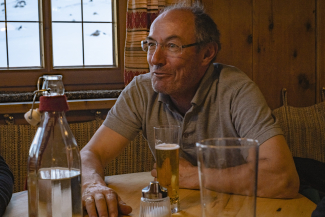
Loisl has his own mountain
Alois "Loisl" Eiter has had his own mountain for two years now: "Piz Louis" is 3071 m high and lies between Zahnspitze and Krone in the Fimba Valley. The local Paznaun people - among them the current governor of the Tyrol, Anton Mattle from Galtür - came up with the idea of dedicating a hitherto nameless mountain peak to Alois during the Corona winter of 2020/21. The mischievous innkeeper kept the hut open on Swiss soil even during that winter when the Austrian inns remained closed due to restrictions. On the border mountain between Graubünden and Tyrol there is now a summit cross with a summit book and an eagle, "because the Swiss don't like summit crosses so much". On the neighbouring Piz Tasna there is an ibex. So the two heraldic animals of Tyrol and Graubünden can now wink at each other from summit to summit. Father Maurus Carnot from Samnaun wrote the story "Capricorn and Eagle" about the bond between the two countries.

The adventure begins with the arrival
The hut is open in winter from Christmas to the end of April and in summer from July to September and can be reached from Samnaun all year round: In summer via a 4-hour hike from Samnaun village or the Alptrider Sattel via Zeblasjoch, continuing to Fuorcla Val Gronda to the hut. Every Friday a guided hike is offered to the hut, where the hiking bus takes you the first 800 metres in altitude to the Zeblasjoch, so that the hut is reached in a comfortable 3 hours of hiking. You can reach the hut even faster by (e-)bike. The onward journey over the Fimber Pass into Val Sinestra is the Transalp classic par excellence. In winter, the easiest way to reach the Heidelberger Hütte is via Piz Val Gronda on an easy off-piste descent. The descent is not groomed, but well marked with poles and, in good snow and weather conditions, can also be done by skiers who do not normally stay next to the piste. By prior arrangement by telephone, ski guests are pulled from the Gampenalpe to the hut by skidoo. After a rest in the hut, skiers return to the ski area on the 6 km long and comfortable downhill run prepared by hut keeper Alois Eiter to the Gampenalp.
Text: Bernhard Aeschbacher
Fotos: Schweiz Tourismus, zvg
